The 2023 Belt and Road Forum on Digital Earth (BRFonDE 2023) was successfully held in Beijing, China from December 6th to 8th. This frontier-pushing Forum brought together more than 100 leading scientists, government officials, engineers, educationists, entrepreneurs from 33 countries and international organizations, for a vibrant exchange of findings and insights into the transformative power of Digital Earth technology in shaping the future of the Belt and Road countries.
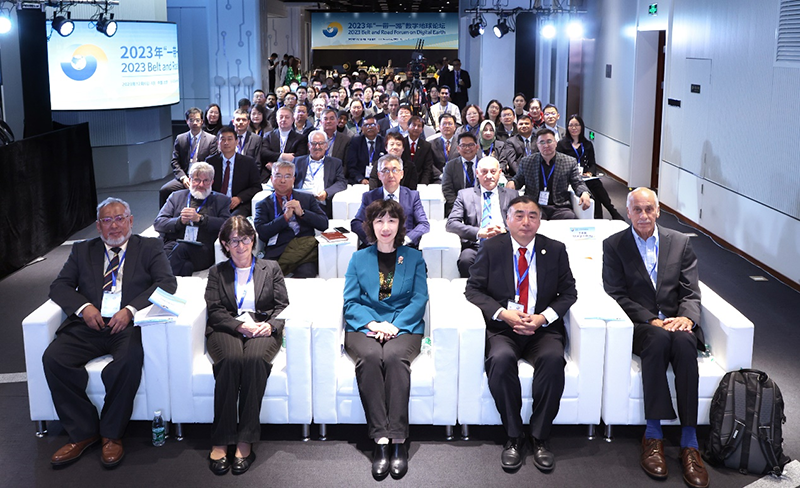
The Forum, with the theme of “Digital Earth and Sustainable Development of the Belt and Road Countries”, was hosted by International Society for Digital Earth (ISDE), International Research Center of Big Data for Sustainable Development Goals (CBAS), and Aerospace Information Research Institute, Chinese Academy of Sciences (AIR, CAS), and organized by International Society for Digital Earth - Digital Belt and Road Alliance (ISDE-DBRAlliance).
On the morning of December 6th, the BRFonDE 2023 kicked off at East Bay International Center, also known as the first Headquarters of International Science and Technology Organizations in China. The opening ceremony was addressed by Ms. Jie Shen, Secretary of the Leading Party Members’ Group and Executive Vice President of Beijing Association for Science and Technology (BAST), Prof. Huadong Guo, Academician of Chinese Academy of Sciences, Honorary President of ISDE, and Director General of CBAS, who delivered a video opening speech, Dr. Mario Hernandez, Vice President of ISDE, Prof. Jinghua Cao, Executive Director of the Secretariat of Alliance of National and International Science Organizations for the Belt and Road Regions (ANSO), Prof. Lena Halounová, President of International Society for Photogrammetry and Remote Sensing (ISPRS), Mr. Adel Elarbi, Tunisian Ambassador to China, Prof. Kamal Labbassi, President of African Association of Remote Sensing of the Environment (AARSE), Prof. Mazlan bin Hashim, Fellow of Academy of Sciences Malaysia, and Dr. Agustan, Chairman of Indonesian Society for Remote Sensing (MAPIN/ISRS). Prof. Changlin Wang, Secretary General of ISDE, presided over the opening ceremony.
At the opening ceremony, the cooperation and development MoU was signed between the International Society for Digital Earth (ISDE) and the Alliance of National and International Science Organizations for the Belt and Road Regions (ANSO), which provided a roadmap for future multinational and multi-regional cooperation and exchange of expertise in Belt and Road countries.
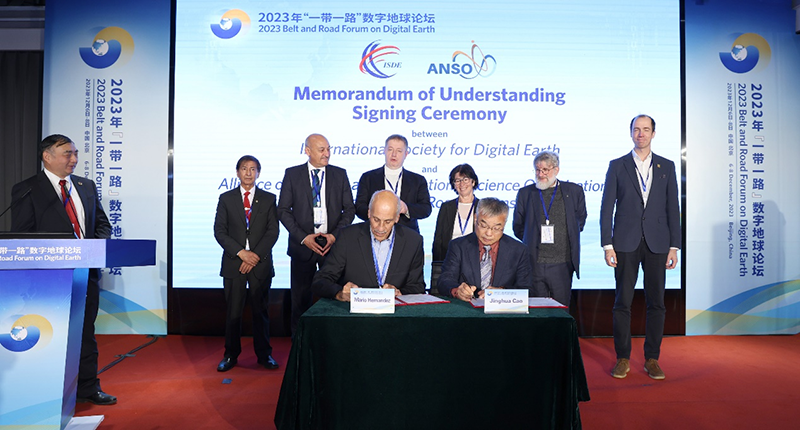
Afterwards, the International Society for Digital Earth - Digital Belt and Road Alliance (ISDE-DBRAlliance) signed cooperation and development MoUs with the Indonesian Society for Remote Sensing (MAPIN/ISRS) and the Mongolian Geospatial Association (MGA) These partnerships highlight the expansion of ISDE in its collaboration network and international connecting with key academic organizations worldwide. The inclusion of these two organizaitons contributes to a more balanced geographical representation within the Alliance, underscoring its commitment to a diverse platform accessible to all stakeholders for exchanging technological expertise.

At the opening ceremony, the Atlas of Resources and Environment in South Asia along the Belt and Road, compiled by the Institute of Mountain Hazards and Environment, CAS was released. Mr. Lugang Guo, Vice President of Beijing Association for Science and Technology (BAST), Prof. Lena Halounová, ISPRS President, Prof. Meen B. Poudyal Chhetri, Immediate Past President of Nepal Center for Disaster Management (NCDM), Prof. Vishwambhar Prasad Sati of Mizoram University, India, and Prof. Pattiyage Ishan Ayantha Gomes of Sri Lanka Institute of Information Technology together released the Atlas. As the first atlas that systematically describes South Asia and the relevant economic corridors within the region, the Atlas is bilingual in Chinese and English, with four chapters, containing 53 sets of second-level subjects and 310 third-level topics, and aims to serve the objectives of UN SDGs 2030 and global sustainable development.
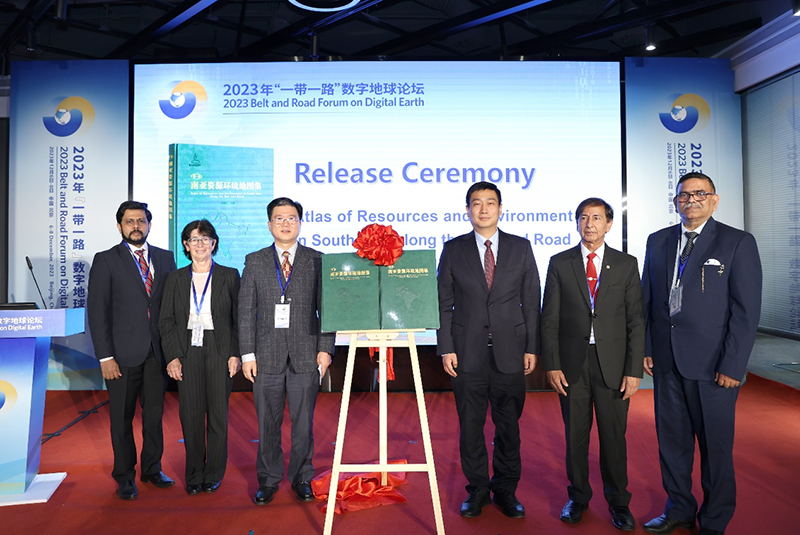
The opening ceremony was then succeeded by a plenary session. ISPRS President Prof. Lena Halounová, delivered a keynote speech titled “What is Digital Earth for International Society for Photogrammetry and Remote Sensing”. Her address not only highlighted the profound interconnection between the Digital Earth and ISPRS’s development, but also unveiled new avenues for collaboration. Prof. Mazlan bin Hashim, Fellow of Academy of Sciences Malaysia and Senior Fellow of Geoscience & Digital Earth Centre (INSTeG), Universiti Teknologi Malaysia, engrossed the attendees with an intriguing keynote speech on “EOS Data for Fast-Realizing Selected SDG Targets: Water Security of Selected Countries along Belt and Road Coastline”, zooming in on the water resources management along the coast countries of Belt and Road by utilizing the capabilities of NASA’s Earth Observing System. Concluding the first plenary session, Prof. Philippe Alphonse M. De Maeyer, Senior Full Professor of the Department of Geography, University of Ghent gave a compelling keynote speech on “Academic Collaboration along the Belt and Road: An Example of Digital Geosciences Teamwork”, bringing to the forefront successful instances of various forms of academic exchanges among Belt and Road countries.

On the afternoon of December 6th, the Round Table was held with more than 30 delegates from 20 Belt and Road countries such as Egypt, Indonesia, Iran, Italy, Kazakhstan, Malaysia, Nepal, Pakistan, Russia, Saudi Arabia, Sri Lanka, Uzbekistan, etc. The attendees discussed how the academic institutes and associations contribute to the implementation of SDGs in Belt and Road countries using digital technologies, and what the role of ISDE-DBRAlliance is in facilitating this process. Based on thorough exchanges of case studies, the participants agreed upon a set of guiding principles and best practices, and then endorsed the Declaration on Digital Earth in Support of Sustainable Development in Belt and Road Countries. This Declaration is a significant achievement for ISDE and the ISDE-DBRAlliance in upholding the Belt and Road Initiative, signifying a stride in building synergies and promoting multilateral collaboration among the Belt and Road countries with everlasting implications.
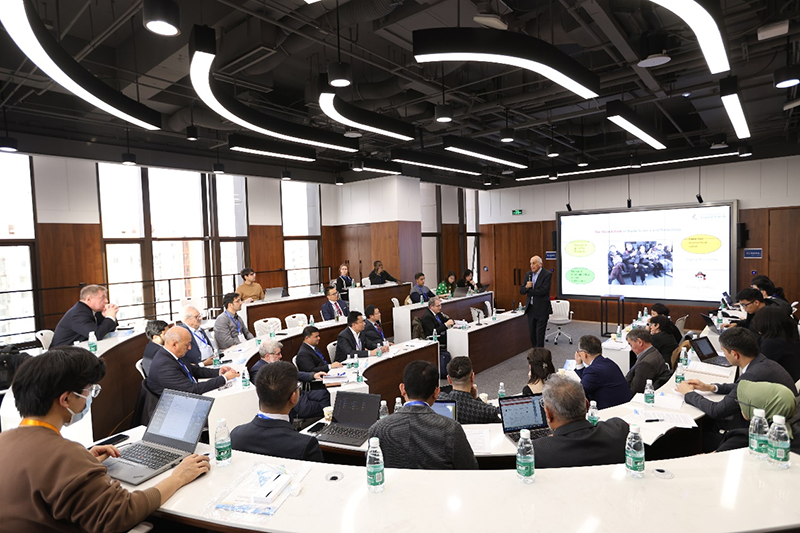
On 7th December, the second day of the Forum commenced with another plenary session. Prof. Kamal Labbassi, President of AARSE, delivered a keynote speech titled “Earth Observation, a Pillar for the Sustainable Management of the Natural Resources and the Socio-economic Development of Africa: Applications to Irrigation Water and Marine Environment”. He presented successful applications of Earth Observation to natural resource management in Africa to a global audience. Prof. Xiaowei Nie, Deputy Secretary General of ANSO and Executive Secretary General of the Greater Bay Area Science Forum (GSF), gave a keynote speech on “‘The Progress on the Realization of Ecosystem Service Value over the Qinghai-Xizang Plateau’ under the Digital Silk Road Initiative”, emphasizing the tremendous importance of the Digital Silk Road Initiative in leveraging the boundless ecosystem service value.

Prof. Marat Nurguzhin, Chairman of the Board of National Center of Space Researches and Technologies (NCSRT) in Kazakhstan, highlighted the exceptional performance of Remote Sensing technologies in natural resource protection through his keynote “Remote Sensing-Based Assessment of Land Desertification in Kazakhstan in the Context of Sustainable Development Goals”. Prof. Seyed Kazem Alavipanah from the Department of Remote Sensing and GIS, University of Tehran, Iran delved into the topic of “Heat, Propulsion of the Universe as an Indicator of the World’s Changes” by exploring the intricate relationship between the remote sensing of heat and the evolution of the cosmos, leaving the audience with a fresh perspective on this scientific frontier. The plenary session concluded with an enlightening keynote speech by Dr. Agustan, Chairman of MAPIN/ISRS, on “Open Platform and Digital Data Sharing for Supporting SDGs in Southeast Asia”. Demonstrating a platform that facilitates co-sharing of big earth data in Southeast Asia, he revealed innovative pathways for Earth Observation by promoting the accessible and collaborative data utilization.

During the two days, 12 parallel sessions were organized with topics focusing on Big Data-Driven Disaster Risk Reduction Knowledge Services, Data and Digital Service in Digital Belt and Road Program, Digital Earth Science and Technology Innovation, Digital Earth in Support of Environment and Ecological Sustainability, Digital Earth in Support of Sustainable Development and Management of Coast, Digital Earth for Archaeology and heritage, Digital Mountain in Support of Belt and Road Initiative, Digital Earth Technology Applications in Climate Change and Natural Disasters, Big Earth Data for Sustainable Cities and Communities and Digital Earth Technology for Industrial Innovation and Upgrading. Totally, a number of 68 presentations were given and full discussions were taken at the forum.
The curtain of the 2023 Belt and Road Forum on Digital Earth fell on the afternoon of December 7th. At the closing ceremony, Prof. Changlin Wang summarized the fruitful outcomes and ample opportunities carved out in harnessing the potential of digital earth technologies. Dr. Mario Hernandez read out the Declaration on Digital Earth in Support of Sustainable Development in Belt and Road Countries and all participants endorsed the important document. The Declaration will serve as a comprehensive and feasible guide for the ISDE-DBRAlliance and it members in the pursuit of future collaboration and development. The BRFonDE 2023 is regarded as a platform for inclusive growth, paving the way for tangible results that will undoubtedly leave a lasting impact on the participating nations and beyond.
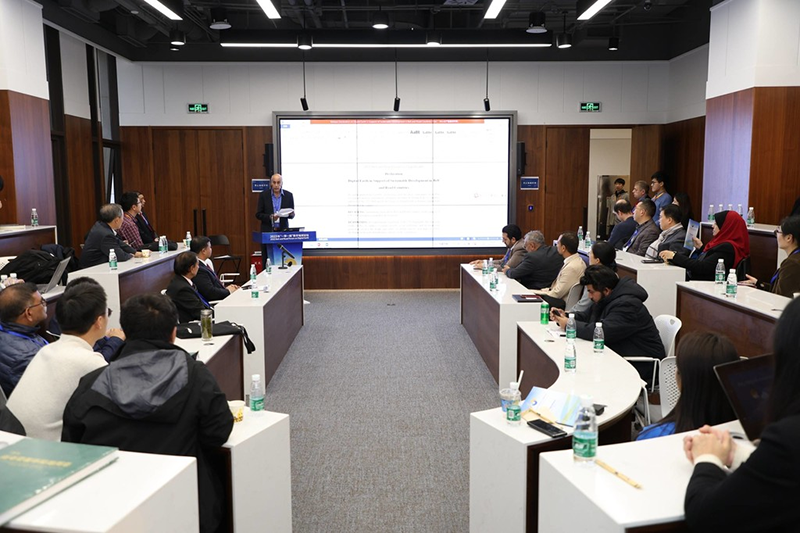
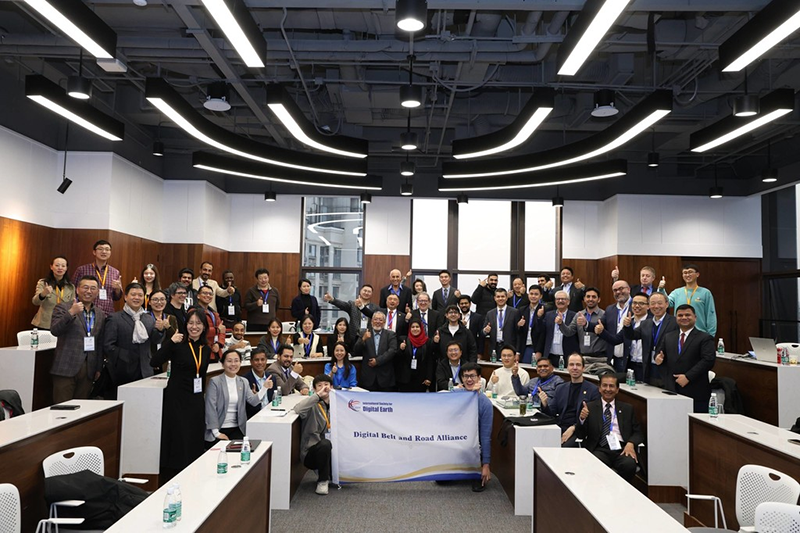
On 8th December, a full-day technical tour was organized. In the morning, participants were showed around the Aerospace Information Research Institute, Chinese Academy of Sciences (AIR, CAS), and the International Research Center of Big Data for Sustainable Development Goals (CBAS). Four international organizations, headquartered in AIR, CAS, namely International Society for Digital Earth (ISDE), International Centre on Space Technologies for Natural and Cultural Heritage (HIST), Digital Belt and Road Program (DBAR), and Integrated Research on Disaster Risk (IRDR), then inspired the participants with their distinctive paths of development and impacts they have on the realization of global sustainable development.
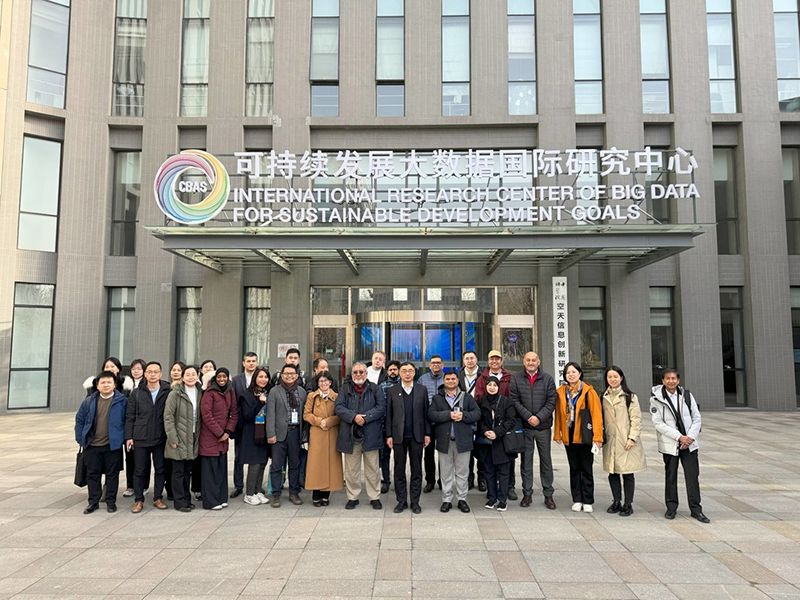
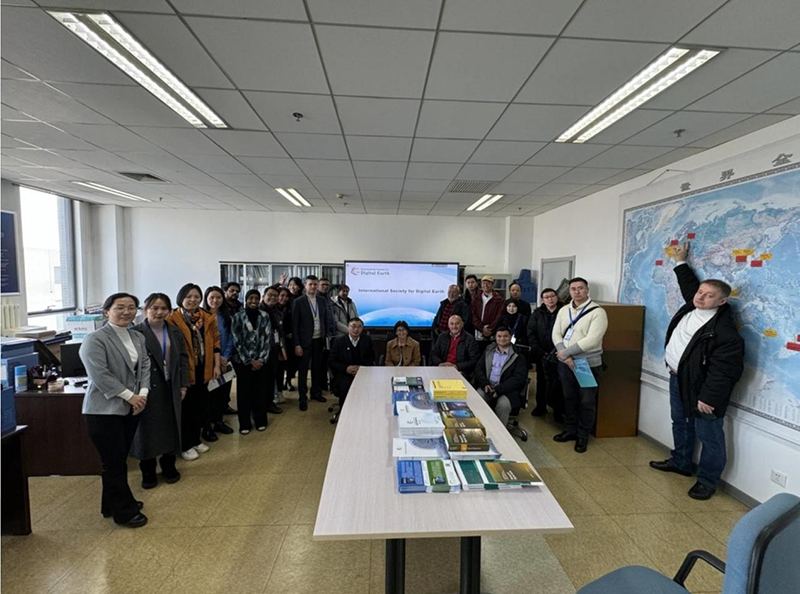
During the afternoon’s tour, which centered on exploring digital cooperation and industry-university partnerships among participating nations, government representatives, entrepreneurs, and scientists, delegates visited SuperMap Software Co., Ltd., an innovative GIS platform software and service provider founded in 1997 and one of the largest GIS platform manufacturers in the world.
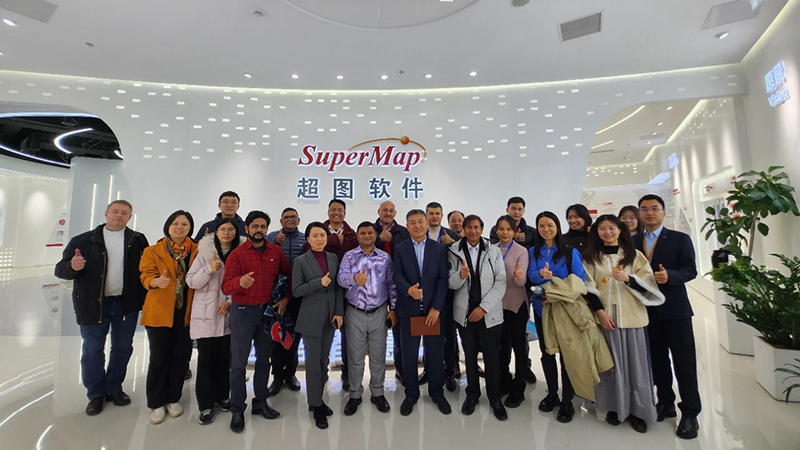
Throughout the three-day event, the Forum explored the immense potential and multifaceted implications of implementing digital solutions within various sectors. With a focus on fostering collaboration and innovation, participants actively engaged in deep discussions, uncovering fresh opportunities, and offering practical solutions for the sustained development of Belt and Road countries and beyond.
The ISDE-DBRAlliance was established in 2017. Guided by the Belt and Road Initiative, it aims to boost scientific and technological exchanges and collaborations with countries and relevant institutions along the Belt and Road by integrating experts, scholars and international cooperation resources in the geospatial information and Digital Earth field so as to reinforce the geospatial information capacity of these countries, and ultimately realize the sustainable development of resources and the environment.

2004-2026 All Rights Reserved 京ICP备06045536号-1 京公网安备 11010802041631号